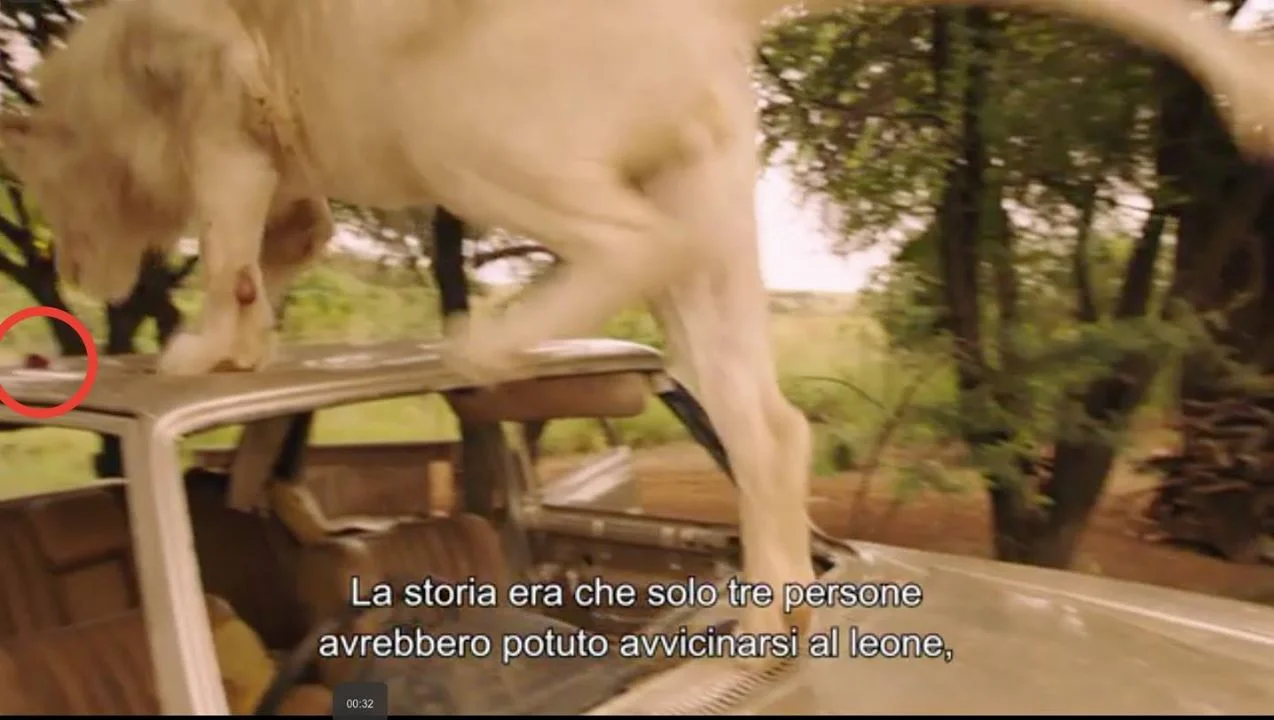Recent headlines have been flush with praise for the charges brought against the systemic abuse of lions perpetrated by North West lion farmer, Jan Steinman of Pienika Farm. Dozens of lions at his property were found to be suffering from mange, while two cubs were seen dragging themselves, unable to walk for unknown reasons. A variety of smaller species of big cat, such as caracals were found in small enclosures, so grossly obese from the confinement that they were unable to even groom themselves. The announcement that charges were being filed against Steinman was met with widespread approval, and dozens of articles covering the subject have since hit the airways.
But while these articles applaud authorities for their investigation and the subsequent charges against Steinman, the majority fail to explore what this means, or doesn’t mean, for the captive lion breeding industry. Without the appropriate context, and itemized possible repercussions, the public is perceiving a false sense of justice and progress in the fight against the captive lion breeding, cub petting, and canned hunting industry.
It’s unlikely that Steinman will face any jail time, or that his Pienika Farm will suffer any longterm consequences in the wake of the charges being made. Rather, Steinman will be slapped with fines, and forced to treat the animals suffering at his establishment. It’s possible that Steinman will be banned (it’s unclear whether banishment would be permanent, more likely it would be temporary) from the South African Predator Association. Especially since Steinman is listed as being a council member of that association. And that will likely be the extent of the matter. You see, instead of banning the captive breeding of lions for cub petting, lion walking, canned hunting, and the lion bone trade, there is and ongoing, and immense, pressure to simply regulate the industry in order, according to proponents of the idea, to assure that lions are humanely bred and raised.
The suggestion that breeding lions in captivity is inhumane, is, according to those who support the regulation of captive lion breeding, largely a contrived falsehood put forth and promoted by animal rights extremists who don’t understand the industry, or how to properly manage wildlife and captive wildlife. While the recent articles addressing Steinman’s abuse of lions and the charges against him tout this case as yet one more galvanizing sign that the public should call for a total ban on captive lion breeding, the vast majority of that industry is viewing this media glut as a showcase of how little understanding the public has of both the CLB industry, and the management of wildlife in general.
In recent years the conservation industry has become an amalgamation of of pro-hunting and -anti-hunting entities which both exploit the ideology that nothing in conservation is “straight forward” and that conservation as a whole is comprised entirely of shades of gray. Both sides of the coin insist that anyone who argues otherwise is an extremist who doesn’t understand the complexities of wild and captive wild conservation.
We’ve seen these accusations from both hunters, and non-hunters here on CWW firsthand. Hunters occasionally show up in the comments of CWW posts insisting that trophy hunting (for our purposes trophy hunting is specifically what we’re referring to, rather than substance hunting, which is not something that’s normally a factor in situations of lion or other big cat hunting) actually helps the conservation of lions and other big cats and wild animal species. Likewise fans of entities like Eduardo Serio, Dean Schneider, Kevin Richardson, and even the Irwins, and Doc Antle, etc. all claim that what those entities do, handling captive wild animals, and in some cases allowing others to handle or interact with captive wild animals, is, in the end, beneficial to the wild conservation of them. Although these two factions vehemently disagree specifically about hunting, they both adhere to the exact same methodology, both claiming that conservation is comprised of “gray spaces” and both claiming to rightfully inhabit such “gray space” and both claiming that they’re supporting conservation 100%.
And, when someone like CWW dares to point out that participating in industries which damage conservation in the immediacy cannot bring about longterm support of it, both these factions lash out, accusing CWW of being extremist and ignorant as to the complexity of conservation matters, or of having some sort of personal agenda in “attacking” those we don’t agree with.
The basic inability of those who participate in the exploitation of wild and captive wild animals to view their own activities with an objective and impartial gaze is what triggers their conflict with anyone who raises concerns about them. They have no qualms about calling down others who engage in the same activities in which they engage, yet they are unable to admit that their own participation is also a problem. Rather, they will go to great lengths to justify their own actions, and contrive purported benefits and/or positive results gained through their activities.
In the realm of trophy hunting, those who support it, like Safari Club International, often fall back on claims that trophy hunting brings huge amounts of money into the conservation industry, and into local communities. Regardless of how many studies you cite verifying that comparatively little local monetary gains are achieved through trophy hunting, and that there is no scientific evidence to prove that allowing trophy hunting boosts populations or species in any way, and that it can cause catastrophic damage to species like elephants, supporters refuse to give up their positions.
In the case of commerce conservationists, like those we've mentioned, the primary excuse and justification for their exploitation of captive wild animals is the assertion that they’re “raising awareness” and “educating the public” about the animals they handle and exploit. Regardless of how much evidence you provide to show that the public perceives and retains a different message than the one exploiters claim to convey, they refuse to cede their position, or acknowledge that the activities they participate in are part of the problem. Groups continue to use them of saving endangered wild animals to raise money for Kevin Richardson to use in the care of his captive bred captive animals.
In both cases, it’s a matter of self preservation. If the fans who support trophy hunters, or exploiters of captive wild animals admit that what they’re supporting damages conservation efforts, then their heroes become the enemy. They become the cause of the problem. This is one reason that the supporters of those CWW discusses have such poor reactions to our unbiased reporting, and attempt to discredit or otherwise malign us. It’s the only defense mechanism they can adopt, especially when in some cases those same supporters will criticize others who do the same thing as their revered heroes.
The greatest danger in embracing the ideology of “gray spaces” is the fact that once you remove the definitive lines between conserving animals and exploiting them, where do you redraw that definition? How do you separate what is conservation from what is exploitation? If two people engage in the exact same activity, but one of them has cultivated a persuasively attractive persona, does that charisma alone make them a conservationist? Are leading conservationists really decided by something as trivial as a popularity contest?
Tragically, it seems as though that’s quickly becoming the case. Although similar “popularity contests” between cute or attractive endangered species and less appealing endangered species have been sharply criticized, the reputation alone of popular figures is being used more, and more, to justify the actions of the person in question. If the supposed “message” supplied by a person is deemed worthy, the method in which they deliver that message is being devoutly defended, even when that method involves directly putting money into the captive breeding, cub petting, canned hunting and other exploitative industries that are crippling and destroying current wildlife populations. And the damage isn’t confined to purchasing captive bred lions or other animals in order to “rescue” them.
The captive lion breeding industry has been protected, yet again, with defenders insisting that proper regulation can solve the problems within. Some conservation groups such as The True Green Alliance–which describes itself as being devoted to creating a society which is properly informed about the principles and practices of wildlife management–have released persuasive, and excellently written articles advocating for canned lion breeding, and concisely explaining why the arguments against it are being driven by extremists who don’t understand the matter in its entirety.
Japan has refused to ban ivory, instead insisting that firm regulations can adequately stem the import and sale of illegal ivory, despite studies showing that the opposite is true.
Botswana, according to this article, also by TGA, is now moving to follow South Africa in refusing to be influenced by the positions of non-African entities where conservation is concerned. According to Botswana’s Minister of Environment, Natural Resources Conservation and Tourism Onkokame Mokaila, the single factor most responsible for any failings within African wildlife conservation is directly due to the fact that “outsiders” continue to “dictate to Africa on how it should manage and use its wildlife resources.”
Private rhino owners within South Africa now control some 50% (conservatively) of all the rhinos in existence, and they have been pressing to lift all bans legalizing the trade of rhino horn for years. Their voices are only getting stronger. And with growing social media commerce conservationists like The Real Tarzann garnering millions of followers and fans by promoting these private rhino owners, the strength of those private owners is only growing. In the video that launched Tarzann to star status on Instagram, he actively lobbied viewers to support the “conservation of rhinos” by following him, and supporting those he was working with. The rhinos seen in his video happened to be owned by Buffalo Kloof Game Reserve, which breeds–and sells–rhinos, including rhinos which are then killed by high-paying trophy hunters. Yet Tarzann advertised them as being the leading rhino conservationists, and his millions of Instagram followers don’t differentiate between a hunting game reserve which breeds rhinos like cattle, and the conservation of wild rhinos, in wild spaces.
The same sort of misleading presentation has seen Kevin Richardson’s #landforlions campaign touted as a new and exciting way to protect wild lions. Fans of Kevin Richardson were urged to donate to the #landforlions campaign in order to help stave off the loss of habitat which is threatening wild lions. Eventually nearly $200,000 USD were raised through the effort, but what Lion Whisperer fans seemed to misunderstand is that this money will never be used to buy wild land, where wild lions are currently struggling to survive. Rather, the money raised through this campaign will be used–as per the information on the campaigns Thundafund page, and as cited in articles promoting the campaign–to purchase the land where Richardson’s sanctuary is located, and will be used for Richardson’s captive bred lions, and other captive bred animals. Only after all of those animals have passed away of natural causes–as much as 20-30 years from now–will the land be available as a protected area for wildlife. Richardson’s Foundation page estimates that unless something changes, wild lions will be extinct by 2050, which is also the earliest that any of the land purchased through his #landforlions campaign would become available for use by wild lions. Yet even when Richardson himself provides these contradictory points of information to his fans, those fans continue to believe that wild lions will somehow benefit from Richardson’s #landforlions campaign, even though wild lions will be extinct by the time that land is made available to them. And that’s presuming Richardson does not continue to purchase more animals for his sanctuary. After all, he now has five young captive bred lions which were purchased for the express purpose of making the feature length film Mia And The White Lion. Those five lions will live out their lives on the same land that Richardson fan’s thought they were buying for wild lions. Interestingly, there is no longer any page devoted to this campaign on the Kevin Richardson Foundation’s website, and the only place where the campaign is fully explained is on the Thundafund page devoted to it.
Screenshot from the Thundafund webpage devoted to the #landforlions campaign run by Richardson.
Another campaign that seems largely misunderstood by fans of the famed ‘Lion Whisperer’ is the #cupforacause which promotes the idea of giving up the cost of a cup of coffee each month in order to “improve the lives of lions”. Because Richardson focuses solely on discussing the decline of wild lions, human conflict with wild lions, habitat loss of wild lions, etc. fans seem to think that giving up a cup of store bought coffee, and in turn donating that price to Richardson’s Foundation every month, will somehow improve the lives of wild lions, but this isn’t the case. No where in any literature or video discussion can we find any specification that the monies donated to the KR Foundation will ever be spent to directly improve the lives of wild lions in specific ways. Rather, it will be used to improve the lives of Richardson’s captive bred lions–some of which already enjoy a trust fund explicitly for their care, courtesy of the Crowned Prince of Monaco. The use of the term wild lions is nothing more than a selling point.
Perversely, fans of Richardson seem incapable of holding him accountable for anything he does, choosing instead to excuse any and all problematic actions. The end result, they claim is worth whatever Richardson does to present the message. Buying lions, and making movies with them, hiring out his animals to be used in props for commercial advertising, interacting with his animals and promoting such interactions, all things those fans would criticize if others engaged in them, are permissible for Richardson because he’s “spreading awareness” about the plight of wild lions. How the conservation of wild lions, in wild places, can be effectively impacted by using captive bred captive lions, to pose with models in a watch advertisement is not clear. But according to Richardson’s fans, it does.
Following the trend of interacting with captive wild animals in order to discuss the conservation of wild animals, Dean Schneider has bought multiple lions and other captive wild animals, explaining that he’s done so in order to “rescue” those animals, and “spread awareness” to his fans. His claims have been readily spread by ignorant news media outlets who understand that they can make a splash with the story. Just like The Real Tarzann (you might recognize the name of the author here, it’s the same one who wrote about Schneider, then publicly lied about CWW and subsequently deleted his own article and scrubbed it from all websites) Richardson, and Eduardo Serio.
All of these commerce conservationists and their fans and followers vehemently argue that conservation is not clear cut, and is instead comprised of gray spaces. Sometimes, in order to conserve animals, you must exploit them. This is nearly the same argument verbatim that trophy hunters use to justify their own interests. In order to conserve the majority of a species, it’s necessary to allow some of them to be killed. Proponents of ivory and rhino horn trade say the same thing. In order to control such trades, and protect elephants and rhinos, you must sacrifice some elephants and rhinos and allow the sale of their body parts. Those who defend captive lion breeding agree. In order to protect wild lions, and keep lions everywhere from becoming extinct, you must allow them to be bred and traded for exploitation by the public.
So where does the gray ever end?
If Dean Schneider buying lions and playing with them is conservation, why not just encourage people to move to Africa from other countries and buy lions from breeders?
If Richardson buying lions and using them to make movies and ad campaigns is conservation, why not just open ranches where lions are bought from breeders and trained for use in entertainment media?
If controlling the ivory trade rather than banning it can save elephants, why are countries like China reducing the desire for ivory by banning it? Why not make all ivory legal everywhere, if legalizing the trade is the best way to conserve elephants?
If farming rhinos and selling their products is what will save rhinos, then why have countries spent millions, or billions of dollars to stop the trade of rhino horn?
Within the gray spaces so covetously defended by those who support them the answer to all of these questions can be answered, with ‘Yes, that’s acceptable.’ if those defenders decide that circumstances are agreeable.
The only place where one can state with a calm, unbending ethical “No, it’s not acceptable to buy and use lions for profit, it’s not acceptable to kill elephants for ivory, it’s not acceptable to farm and harvest rhinos for rhino horn.” is outside the ambiguity of undefined gray spaces.
As we careen toward the eradication of huge swaths of environments and the species living within them, and toward the destruction of our planet as we know it, the last thing the earth needs us to do is make more allowances for exploitation and destruction. If you have to justify what you’re doing, if you have to provide lengthy explanations as to why what you’re doing isn’t the same as what others are doing, if you have to lay out arguments to try and back up claims that what you’re doing saves animals, while others doing it harms animals, that in and of itself is an admission that you understand you’re position is so ambiguous that it requires definition.
Honesty and ethics stand on their own, easy for anyone to see at a glance. It’s not a complicated shell game of participation and exploitation under the guise of stopping participation and exploitation. It’s black and white, true or false. Not shapeless gray and morally ambiguous.




















































































